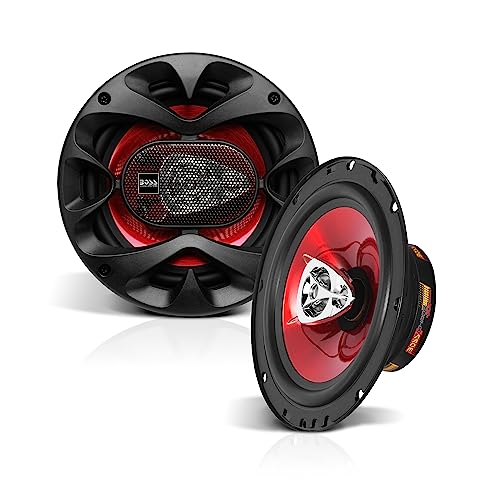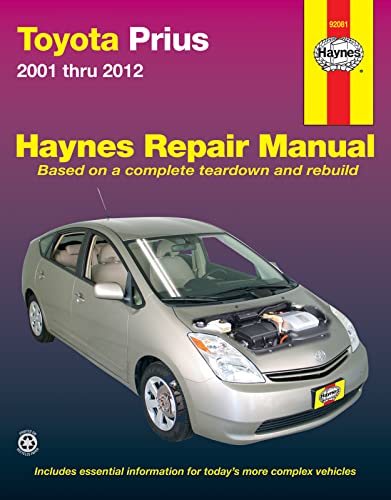As an Amazon Associate, I earn from qualifying purchases
Are you curious about how much a Toyota Tundra weighs? Whether you’re planning to tow a heavy load, figure out fuel efficiency, or just want to know if it fits your garage, knowing the exact weight is key.
The weight of a truck affects its performance, safety, and your overall driving experience. You’ll discover the different factors that influence the Tundra’s weight and why it matters to you. Keep reading to get the full picture and make smarter decisions about your truck.

Credit: www.reddit.com
Toyota Tundra Weight Basics
The weight of a Toyota Tundra is an important factor for many truck buyers. Knowing the weight helps with safety, fuel efficiency, and towing capacity. The Tundra’s weight can vary depending on the model and features. Understanding the basics of its weight makes it easier to choose the right truck for your needs.
Two key terms to know are curb weight and gross vehicle weight rating. These numbers give a clear picture of the truck’s size and strength. Let’s look at what these terms mean and why they matter.
Curb Weight Explained
Curb weight means the weight of the truck without any passengers or cargo. It includes all standard equipment and fluids like fuel and oil. This weight shows how heavy the truck is when ready to drive. For the Toyota Tundra, curb weight usually ranges from 5,300 to 6,100 pounds. The exact number depends on the engine, cab size, and bed length. Lighter trucks use less fuel and handle better. Heavier trucks may feel stronger and more stable on the road.
Gross Vehicle Weight Rating
Gross Vehicle Weight Rating (GVWR) is the maximum weight the truck can safely carry. This includes the truck’s curb weight plus passengers, cargo, and any additional equipment. The GVWR for a Toyota Tundra can go up to 7,200 pounds or more. Staying within this limit keeps the truck safe and reliable. Overloading a truck can damage the brakes, tires, and suspension. It also makes driving dangerous. Knowing the GVWR helps owners avoid these problems and keep their Tundra in good shape.
Weight Variations By Model
The Toyota Tundra’s weight changes depending on the model type. Each model has a unique size and build. This causes differences in how much they weigh. Knowing these variations helps with choosing the right truck.
The truck’s weight affects fuel use, handling, and towing ability. Lighter trucks are easier to drive in the city. Heavier ones often have stronger frames for tough jobs. Here is a look at the weight differences by Tundra model.
Regular Cab Models
Regular Cab Tundras have the smallest cabin size. They usually weigh between 4,800 and 5,200 pounds. This model is simple and made for work tasks. The lighter weight helps with better fuel economy. It fits well in tight spaces and city driving.
Double Cab Models
Double Cab Tundras have a larger cabin than Regular Cab. This adds space for passengers and cargo. Their weight ranges from about 5,200 to 5,500 pounds. The extra weight comes from the extended cab size. It balances passenger comfort with good performance.
Crewmax Models
CrewMax Tundras have the biggest cabin and most features. They weigh the most, from 5,400 to 5,700 pounds. The larger size means more space for people and gear. The heavier build gives strong towing and hauling power. CrewMax suits those needing comfort and capacity.
Impact Of Engine Types
The engine type plays a key role in the overall weight of a Toyota Tundra. Different engines have unique sizes and parts that affect the truck’s weight. Understanding these differences helps buyers choose the right model for their needs.
V6 Vs V8 Engines
A V6 engine is smaller and lighter than a V8 engine. This means Tundras with V6 engines weigh less and may use less fuel. V8 engines add more power but also add more weight. The extra weight comes from larger engine blocks and extra cylinders. This affects towing and handling, but also increases the truck’s curb weight.
Hybrid Options And Weight
The hybrid Toyota Tundra combines a gasoline engine with an electric motor. This setup adds battery packs and extra components, increasing the truck’s weight. Despite the added weight, hybrids offer better fuel economy. The heavier weight may affect acceleration but improves efficiency. Buyers should consider this trade-off when choosing the hybrid model.
Effect Of Trim Levels
The weight of a Toyota Tundra changes with different trim levels. Each trim adds unique features. These features affect the truck’s overall weight. Understanding this helps buyers choose the right model.
Base Vs Premium Trims
The base trim is the lightest version. It has fewer features and simpler materials. This keeps the weight lower. Premium trims add more comfort and tech features. They include bigger wheels, leather seats, and extra safety gear. These add extra pounds. Premium trims can weigh several hundred pounds more than the base model.
Off-road Packages
Off-road packages add special parts for rugged use. These parts include skid plates, larger tires, and heavy-duty suspension. These upgrades increase the weight significantly. Off-road Tundras can weigh more than standard trims. The extra weight comes from reinforced parts needed for tough terrain.
Cargo And Payload Considerations
The Toyota Tundra is built for strength and utility. Knowing its cargo and payload capacity helps you use it safely. This is important for work or travel. You must understand how much weight the Tundra can carry and tow. This ensures the truck performs well without damage.
Towing Capacities
The Toyota Tundra can tow heavy loads easily. Its towing capacity varies by model and engine type. Most Tundras can tow between 8,800 and 12,000 pounds. This makes it suitable for trailers, boats, and campers. Always check the exact towing limit for your Tundra model. Stay within this limit to avoid strain on the truck.
Payload Limits
Payload refers to the weight the truck bed can carry. The Tundra’s payload capacity ranges from about 1,500 to 1,730 pounds. This includes passengers and cargo in the truck bed. Exceeding payload limits can harm the suspension and brakes. Balance the load to keep the truck stable and safe on the road.
Comparing Tundra To Competitors
Comparing the Toyota Tundra to its main competitors helps buyers understand its size and capability. Weight plays a key role in a truck’s performance and fuel efficiency. This section breaks down how the Tundra’s weight stacks up against two popular trucks: the Ford F-150 and Ram 1500. Knowing these differences can guide better truck choices.
Weight Differences With Ford F-150
The Toyota Tundra weighs between 5,300 and 6,100 pounds, depending on the model. The Ford F-150’s weight ranges from 4,000 to 5,700 pounds. The Tundra is generally heavier, which can add to stability but might reduce fuel economy. The F-150 offers lighter models, making it easier to handle and more efficient on gas.
Ram 1500 Weight Comparison
The Ram 1500 weighs roughly 4,900 to 6,300 pounds. This range overlaps with the Tundra’s weight. Both trucks have similar heavy-duty versions. The Ram 1500’s lighter models can be more fuel-friendly. The Tundra tends to be solidly built but a bit heavier overall. Weight affects towing and payload, so consider this when choosing.
Fuel Efficiency And Weight
The weight of a Toyota Tundra affects its fuel efficiency. Heavier vehicles use more fuel to move. This impacts miles per gallon (MPG) ratings. Understanding the link between weight and fuel use helps buyers make smart choices.
Weight’s Role In Mpg
Heavier trucks need more energy to accelerate. This means the engine works harder and burns more fuel. The Toyota Tundra’s weight can lower its MPG. Lighter trucks often get better fuel economy. Weight also affects braking and handling, which relate to fuel use during driving.
Weight Reduction Efforts
Toyota aims to reduce the Tundra’s weight. It uses lighter materials like aluminum for parts. This helps improve fuel efficiency without losing strength. Weight reduction also enhances performance and driving comfort. Small changes in weight lead to better MPG numbers.

Credit: www.355toyota.com
Customization And Weight Changes
Customizing a Toyota Tundra can change its weight significantly. Many owners add parts to improve looks or performance. These changes do not just affect style; they also affect the truck’s total weight. Knowing how much weight is added helps keep the truck safe and balanced.
Aftermarket Accessories
Aftermarket accessories can add extra pounds to the Tundra. Running boards, bed covers, and toolboxes are common additions. These parts improve convenience and style but add weight. Extra weight can reduce fuel efficiency and affect handling. Always check the weight of accessories before installation.
Impact Of Lift Kits And Tires
Lift kits raise the truck’s height and change its center of gravity. Larger tires give a tougher look and better off-road ability. Both lift kits and big tires add a lot of weight. This extra weight affects suspension, brakes, and fuel use. Owners should choose parts that match their truck’s capacity.

Credit: www.caranddriver.com
Frequently Asked Questions
What Is The Curb Weight Of A Toyota Tundra?
The curb weight of a Toyota Tundra ranges between 5,200 and 5,800 pounds depending on the model.
How Does Toyota Tundra Weight Affect Fuel Efficiency?
Heavier trucks like the Tundra usually consume more fuel due to their larger weight.
What Is The Maximum Payload Capacity Of A Toyota Tundra?
Toyota Tundra can carry up to about 1,730 pounds of payload safely.
Does The Toyota Tundra Weight Vary By Model Year?
Yes, newer models often weigh more because of added features and safety equipment.
How Does The Toyota Tundra Weight Compare To Other Trucks?
The Tundra is heavier than many mid-size trucks but lighter than some full-size competitors.
Why Is Knowing The Toyota Tundra’s Weight Important?
Weight affects towing, fuel economy, and vehicle handling, making it key for buyers.
Conclusion
The Toyota Tundra’s weight varies by model and features. Knowing its weight helps with towing and fuel planning. It ranges from about 5,300 to 6,000 pounds. This affects how it drives and handles on roads. Choose the right Tundra based on your needs.
Weight matters for safety and performance too. Keep these facts in mind before buying. You now understand how much a Toyota Tundra weighs. Simple and clear, just what you need.
As an Amazon Associate, I earn from qualifying purchases


